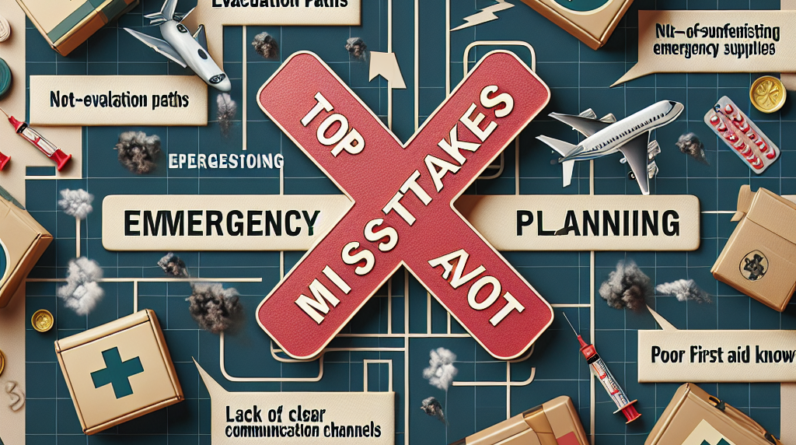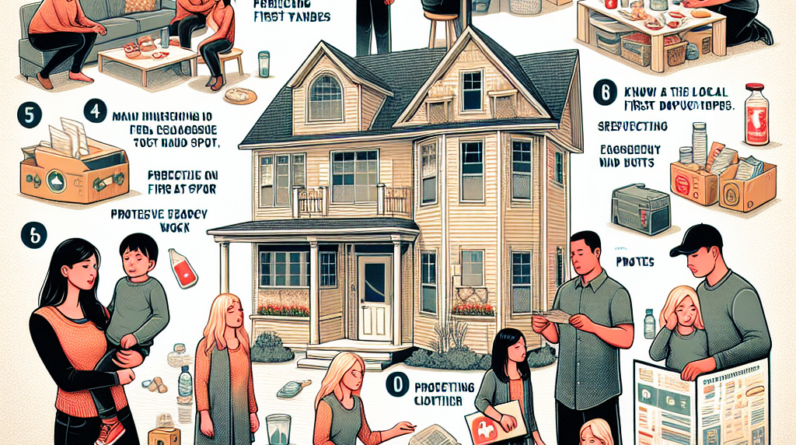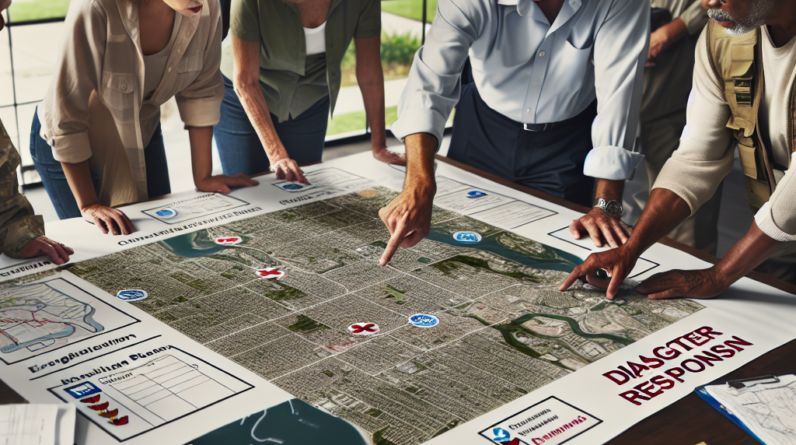
Emergency preparedness is crucial for ensuring safety, but common mistakes can undermine even the best-laid plans. Here’s how to avoid these pitfalls and ensure your readiness for any crisis.
Failing to Assess Risks Properly
# Understanding Your Specific Risks
When planning for emergencies, a common mistake is not fully understanding the risks specific to your area. For instance, coastal regions often prepare for hurricanes and floods, whereas inland areas might focus on tornadoes or wildfires. Conducting a thorough risk assessment specific to your locale is crucial. Dive deep into potential natural and man-made disasters that could impact you. Don’t just rely on general statistics; local experts and community insights can provide valuable, tailored risk assessments.
# Inadequate Training and Drills
Having an emergency plan is a start, but practicing it is where many falter. Regular training and unexpected drills are essential to ensure everyone knows their role in a crisis. Adults and children alike should participate in these drills, which should include a variety of scenarios to keep preparedness sharp and ready for actual emergencies.
# Neglecting to Update Your Plan
Life’s constant changes mean your emergency plan needs regular reviews and updates. Annually revise your plan to incorporate new family members, housing situations, or even pets. Also, keep abreast of new developments in your community that might affect emergency services or introduce new hazards.
Ignoring Communication Plans
# Establishing Clear Communication Methods
Effective communication is critical in emergencies. Ensure your plan includes multiple communication methods, such as phones, social media, and predetermined meeting spots. Regular testing of these methods can reveal potential flaws before an emergency occurs.
# Creating a Family Communication Tree
A communication tree can streamline contact among family members during a crisis. Regular updates to this tree are necessary to accommodate changes like moves or new contact numbers.
# Utilizing Social Media Wisely
While social media is great for quick updates, it’s also prone to misinformation. Follow credible sources like local emergency management offices to obtain reliable information during crises. However, always have backup communication methods ready.
Not Having an Emergency Kit Ready
# Assembling Your Emergency Supplies
An emergency kit is essential, yet many overlook its comprehensive preparation. Include necessities such as water, food, medications, and first aid supplies, tailored to your family’s specific needs, including pets and children.
# Regularly Checking and Updating Your Kit
Regular checks and updates of your emergency kit are crucial. Replace expired items and adjust contents for seasonal needs. This ensures your kit is always ready to use.
# Knowing Where Your Kit Is At All Times
Store your emergency kit in a known, easily accessible location to ensure it can be quickly retrieved when needed, supporting swift action in a crisis.
Underestimating the Importance of Community Engagement
# Building Strong Neighborhood Networks
Community engagement enhances preparedness. Establishing connections and sharing resources within your community can significantly bolster collective emergency response capabilities.
# Participating in Local Emergency Programs
Engage in local emergency preparedness programs to learn and connect with others committed to preparedness. This not only enhances your skills but also integrates you into a broader network of resources and support.
# Sharing Knowledge and Resources
Sharing your preparedness strategies and resources can uplift your whole community. Whether through social media or community meetings, shared knowledge fosters a more resilient community.
FAQ
# 1. Why is assessing risks essential in emergency planning?
Understanding specific risks allows for targeted preparations, making your emergency plan more effective and relevant.
# 2. How often should I practice my emergency plan?
Practice your emergency plan at least twice a year, incorporating a variety of scenarios to ensure thorough preparedness.
# 3. What should I include in my emergency kit?
Your kit should contain essentials like water, non-perishable food, medications, a first aid kit, basic tools, and important documents, customized to your family’s needs.
# 4. How can I engage with my community for better emergency preparedness?
Build networks with neighbors, participate in local programs, and share resources and knowledge to strengthen community preparedness.
# 5. What are the consequences of not including communication in my emergency plan?
Failing to plan for robust communication can lead to confusion and danger during emergencies. Ensure your plan includes effective, reliable communication strategies.


